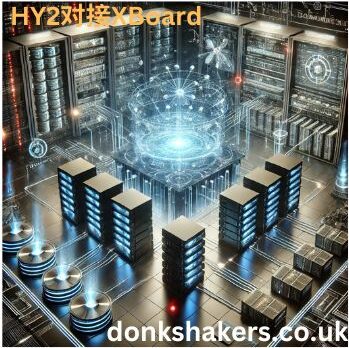This guide explores everything you need to know about HY2对接XBoard, including its benefits, implementation steps, challenges, and future potential.
Table of Contents
ToggleWhat Is HY2对接XBoard?
HY2对接XBoard refers to the integration process where the HY2 system connects with XBoard. Let’s break it down:
- HY2 System: HY2 is a system widely recognized for its data management and operational capabilities. It’s commonly used in industries requiring real-time data synchronization, such as logistics, e-commerce, and supply chain management.
- XBoard: XBoard is a powerful platform known for its dashboarding capabilities, data visualization, and process automation. It allows users to monitor, analyze, and act on critical business data in real time.
By combining these two systems, HY2对接XBoard enables seamless communication and data sharing, creating a unified platform for operational excellence.
Why Is HY2对接XBoard Important?
1. Data Synchronization
HY2 and XBoard integration ensures that data is updated across platforms in real time. This eliminates discrepancies and allows users to access accurate information anytime.
2. Improved Decision-Making
XBoard’s advanced visualization tools allow businesses to make data-driven decisions by analyzing synchronized data from HY2. This integration provides insights that would be difficult to achieve with standalone systems.
3. Operational Efficiency
Automating workflows through HY2对接XBoard reduces manual intervention, minimizes errors, and accelerates processes, saving time and resources.
4. Scalability
As businesses grow, they require systems that can scale with their needs. HY2对接XBoard provides the flexibility to adapt to changing requirements, making it an ideal choice for expanding enterprises.
Key Features of HY2对接XBoard
1. Real-Time Data Integration
This integration ensures instant updates across both platforms, maintaining consistency in data.
2. Customizable Dashboards
XBoard offers user-friendly dashboards that can be customized to display data from HY2, catering to specific business needs.
3. Automation Capabilities
Automating routine tasks like data entry, report generation, and notifications saves time and improves accuracy.
4. Secure Data Handling
With advanced encryption and secure APIs, HY2对接XBoard ensures that data is protected from unauthorized access.
5. Cross-Platform Accessibility
Access data and manage workflows from any device, ensuring operational continuity regardless of location.
How to Implement HY2对接XBoard: A Step-by-Step Guide
Step 1: Assess System Compatibility
Before starting, ensure that both HY2 and XBoard are compatible with integration. Check their API documentation to confirm support for seamless connectivity.
Step 2: Define Integration Goals
Clearly outline the objectives of the integration. Determine which data points need synchronization, what workflows require automation, and the expected outcomes.
Step 3: Configure APIs
Both HY2 and XBoard provide APIs for integration. Configure these APIs to establish a communication channel between the two systems.
Step 4: Data Mapping
Map the data fields in HY2 to their corresponding fields in XBoard. This ensures accurate data transfer and avoids mismatches.
Step 5: Test the Integration
Conduct thorough testing to identify and fix any issues. Check for data consistency, synchronization speed, and error handling capabilities.
Step 6: Deploy and Monitor
Once testing is successful, deploy the integration. Continuously monitor the performance to ensure smooth operation and address any potential issues.
Benefits of HY2对接XBoard
1. Enhanced Productivity
Integration streamlines processes and eliminates redundant tasks, allowing teams to focus on strategic activities.
2. Accurate Analytics
Real-time data synchronization ensures that analytics are based on the latest and most accurate data.
3. Reduced Costs
By automating workflows and reducing manual efforts, businesses can cut operational costs significantly.
4. Better Collaboration
Teams across departments can access shared data, fostering collaboration and improving decision-making.
Common Use Cases for HY2对接XBoard
1. E-Commerce
Synchronize inventory, orders, and customer data between HY2 and XBoard for a unified e-commerce management system.
2. Supply Chain Management
Monitor shipments, track inventory levels, and generate performance reports in real time.
3. Finance and Accounting
Integrate financial data to automate report generation, track expenses, and analyze cash flow.
4. Project Management
Use XBoard’s dashboards to visualize HY2 project data, enabling better resource allocation and deadline management.
Challenges in HY2对接XBoard
1. Complex Configuration
Setting up the integration can be technically challenging, especially for users unfamiliar with APIs.
2. Data Security Risks
Although HY2 and XBoard are secure, improper configuration can expose sensitive data to risks.
3. System Downtime
Any integration issue can lead to system downtime, affecting operations.
4. Maintenance Requirements
Regular updates and maintenance are required to ensure the integration continues to perform optimally.
Best Practices for HY2对接XBoard
1. Plan Thoroughly
Define integration objectives clearly and involve stakeholders from both HY2 and XBoard teams during the planning stage.
2. Leverage Expertise
Work with experienced developers or integration specialists to set up and configure the systems.
3. Use Monitoring Tools
Deploy monitoring tools to track integration performance and identify potential issues proactively.
4. Train Your Team
Provide training to ensure that employees understand how to use the integrated system effectively.
Tools to Enhance HY2对接XBoard Integration
- Zapier: Automates workflows between HY2 and XBoard with minimal coding.
- Postman: Ideal for testing and configuring APIs during integration.
- DataDog: Monitors system performance and integration health.
- Slack Integration: Set up notifications from XBoard directly into Slack for better communication.
The Future of HY2对接XBoard
As technology evolves, HY2对接XBoard is expected to become even more powerful. Future developments may include:
- AI-Driven Insights: Advanced AI algorithms will provide predictive analytics and deeper insights.
- Blockchain Integration: Adding blockchain for secure and transparent data handling.
- IoT Compatibility: Integrating IoT devices for real-time monitoring and automation.
- Enhanced User Interfaces: More intuitive tools for setting up and managing the integration.
Conclusion: Unlock the Power of HY2对接XBoard
HY2对接XBoard is a game-changer for businesses seeking to optimize their operations through seamless platform integration. By combining the strengths of HY2’s robust data handling with XBoard’s advanced visualization and automation capabilities, this integration offers unparalleled efficiency, accuracy, and scalability.
Whether you’re in e-commerce, logistics, or project management, implementing HY2对接XBoard can transform your workflows and give you a competitive edge. By following best practices and leveraging modern tools, businesses can unlock the full potential of this integration and stay ahead in an increasingly digital world.
